#migratory warblers
Explore tagged Tumblr posts
Text
The Wonderful Aspects of Winter and Spring are All Here
Winter and Spring Here in central Florida we are in a period of flux between winter and spring. Some early phlox flowers are starting to appear on the roadsides, and the gorgeous redbud trees are starting to put out their first little buds. Most days (the last two have been cooler than normal thanks to the parade of winter storms) are warming up, but evenings and nights are still pretty cool. In…
#bird photographs#bird photography#birds#colorful warblers#early spring#first signs of spring#Florida birds#Florida pine warblers#Florida warblers#Florida winter birds#male pine warblers#migratory warblers#pine warblers#small warblers#spring#spring weather#transition between winter and spring#warbler photographs#warbler photography#warblers#winter birds
1 note
·
View note
Text



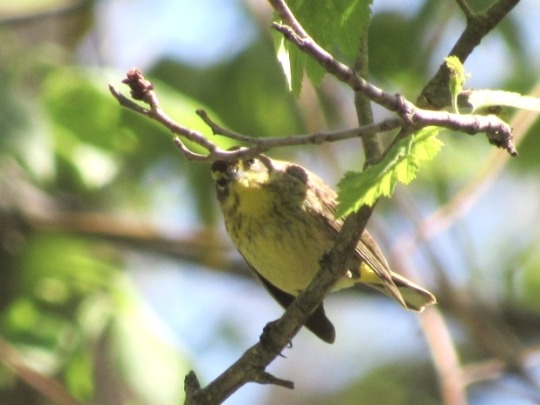

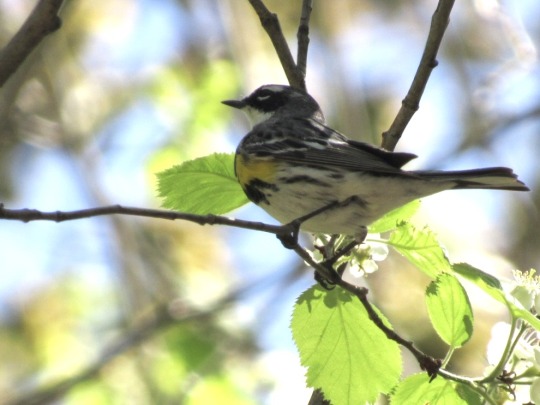
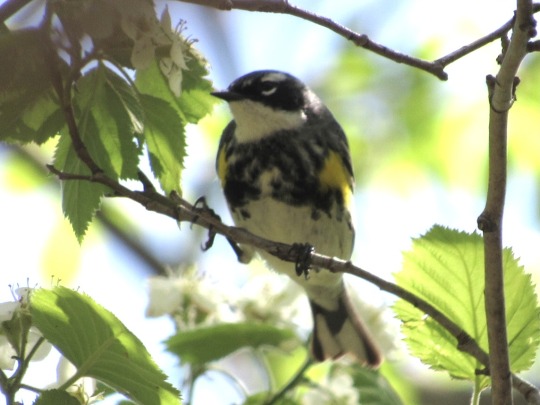
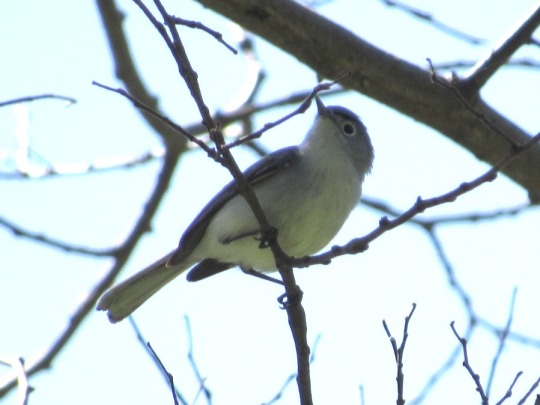
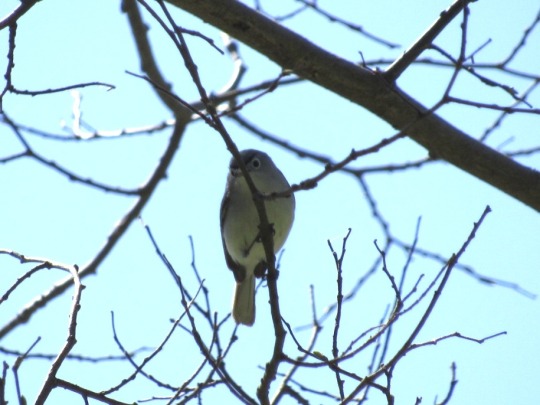
A Palm Warbler (top) a Yellow Rumped Warbler (Myrtle’s) and a Gray Blue Gnatcatcher (bottom) all taken today on my bird walk. All lifers for me.
#palm warbler#yellow rumped warbler#gray blue gnatcatcher#bird photography#bird watching#migratory birds#spring birds#Michigan
6 notes
·
View notes
Text
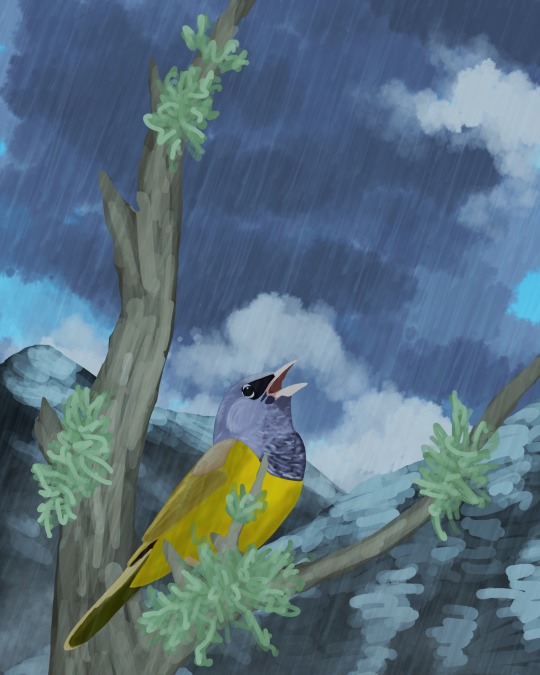
Downpour Delight
7 notes
·
View notes
Text
Favorite Bird Photos of September '24
“Beside them the birds of the heavens dwell; they sing among the branches. From Your lofty abode You water the mountains; the earth is satisfied with the fruit of your work.” Psalm 104:12-13 Yellow-billed Cuckoo Eastern Bluebird (fledgling) Eastern Bluebird Brown-headed Nuthatch Black & White Warbler Ruby-throated Hummingbird Ruby-throated Hummingbird Cape May Warbler American…

View On WordPress
#American Redstart#bird photography#Birdwatching#black and white warbler#brownheaded nuthatch#butterflies#cape may warbler#cooper&039;s hawk#eastern bluebird#gulf fritillary#hawks#hummingbirds#migratory birds#North Carolina#nuthatches#raptors#red-whouldered hawk#ruby-throated hummingbird#scarlet tanager#warblers#yellowbilled cuckoo
0 notes
Text

A New Study Reveals Migration Isn’t a Solo Affair—It’s the Social Event of the Season
Migrants face myriad challenges. That's why certain songbird species choose to travel (and possibly even work) together, according to research drawing on a trove of bird banding records. In a pioneering study published last week in the Proceedings of the National Academy of Sciences, researchers discovered that songbirds socialize across species lines, forming “migrating communities” as they travel. While ornithologists previously believed migrant species like the American Redstart and Magnolia Warbler just happened to end up flying near one another, we now know that this closeness is no coincidence: It’s a sign that different bird species can form ecologically meaningful relationships and may even help each other out along their migratory journeys...
Read more: https://www.audubon.org/magazine/new-study-reveals-migration-isnt-solo-affair-its-social-event-season
792 notes
·
View notes
Text

& one more post for the queue!
I call these migratory mugs - all of these warblers pass through my city (I live near a lovely greenspace along one of the rivers) and I feel so lucky to be able to walk 10mins away to experience spring migration <3









#artblog#pottery#ceramics#handbuiltceramics#handbuilding#handbuilt mug#mug#warblers#spring migration
420 notes
·
View notes
Text

Day 4 of Migratory May 2025 is the Golden-Cheeked Warbler. Although there's nothing wrong with a mockingbird, wouldn't this make a good state bird for Texas?
Migratory May is hosted by @migratorymay
458 notes
·
View notes
Text
Those of you who are still dumbasses: hold onto that feeling. It's worth something.
When I was a kid, nothing was available with the push of a button or a stray thought to the Allminds. You'd look outside, and see a weird bird. Maybe you were lucky, and your folks were rich enough to have books on birds.
My grandfather had a book on birds. I would go run to look at it, and find out that the bird in question was maybe a Tightrope Tit Warbler or a Double-Breasted Cheese-Hating Nuthatch. No way to be sure. You could never get a good enough look at it before it flew off, unless you were some kind of weirdo with a camera and a bird book next to the window all the time. You had to live with the uncertainty.
Nowadays, you don't even get to have the curiosity. When you look at the bird, your smart window highlights it in glowing yellow, first checking it as a disease vector, a potential threat to the biological security of the homestead, and then flickering to green as it identifies it as no threat at all. Common Jugsbird, it says, and puts the Latin name underneath. If you look at the words too long, the voice in your head will start lecturing you about that bird's migratory patterns. Can't avoid becoming informed. It's like that for everything, now.
If you've managed to keep from learning about things, if you're still the kind of person who slows down on the highway in order to mouth out the words on the sign, then you're a rarity now. The congealed essence of all human knowledge has failed to permeate your thick fucking skull. You live in some kind of idyllic bliss, where your level of natural curiosity is so low that the Allminds barely differentiate you from an ornamental plant. I envy you. I wish I could forget what my mailman's favourite underwear brand is.
139 notes
·
View notes
Text


Out now in Avian Conservation and Ecology, a paper I contributed fieldwork & artwork to! By Hankyu Kim and many other colleagues and researchers:
Annual migratory movement, apparent molt-migration, migration schedule, and diffuse migratory connectivity of Hermit Warblers. And hooray for free, open research for all!
Fieldwork for this was super fun - I was involved at the Yosemite site where I helped to set up nets and call in adult males to put their little tracking backpacks on them in a gorgeous old growth high altitude forest where they thrive!
#birblr#birdblr#ornithology#migration#warblers#hermit warbler#scientific illustration#wildlife art#artists on tumblr#scientists on tumblr
174 notes
·
View notes
Text
BOTD: Cape May Warbler

Photo: Larry Hubble
"Many of our migratory warblers seem to lead double lives, and the Cape May is a good example. It summers in northern spruce woods, but winters in the Caribbean, where it is often seen in palm trees. In summer it eats insects, but during migration and winter it varies its diet with nectar from flowers and with juice that it obtains by piercing fruit. Birders easily recognize the tiger-striped males in spring, but drab fall birds can be perplexing."
- Audubon Field Guide
#birds#cape may warbler#birds of north america#north american birds#warblers#passerines#birds of the us#birds of central america#birds of the caribbean#birding#bird watching#birdblr#birblr#bird of the day#Setophaga tigrina
68 notes
·
View notes
Text
The Beautiful Pine Warbler is Apparently on His Own
Envined The shy little pine warbler (Setophaga pinus) that showed up here a few weeks ago has now become a regular at my feeding station. At first I just got glimpses of yellow from time to time up high in the oaks. Eventually, he began coming down closer and once in a while grabbing a seed or a mealworm. Now I see him almost every day both in the trees and at the station. Interestingly, I have…
#bird photographs#bird photography#birds#colorful birds#colorful warblers#Florida birds#Florida pine warblers#Florida warblers#male pine warblers#migratory birds#migratory warblers#pine warblers#small birds#warbler photographs#warbler photography#warblers#winter birds#winter warblers#yellow birds#yellow warblers
0 notes
Text

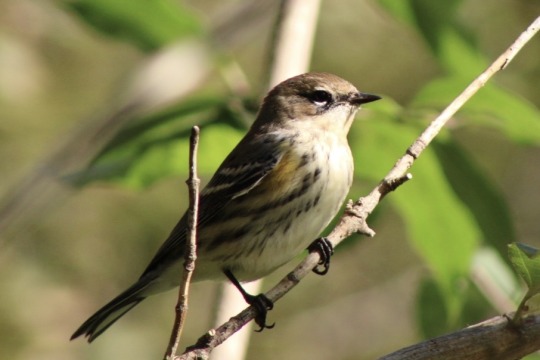
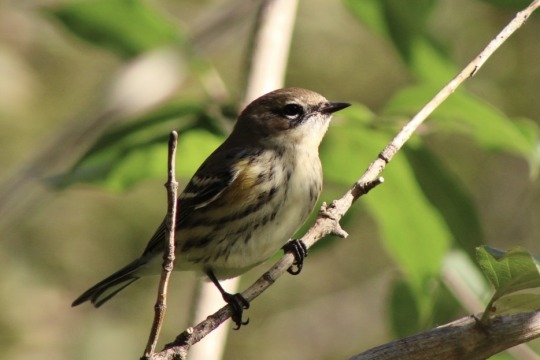
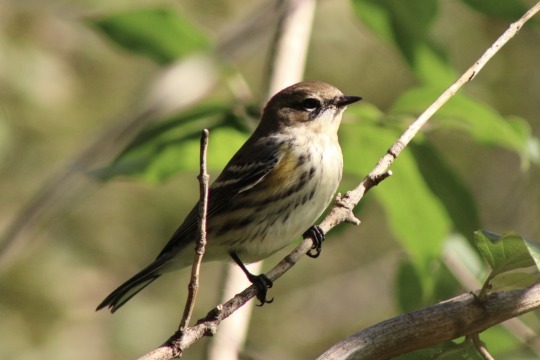
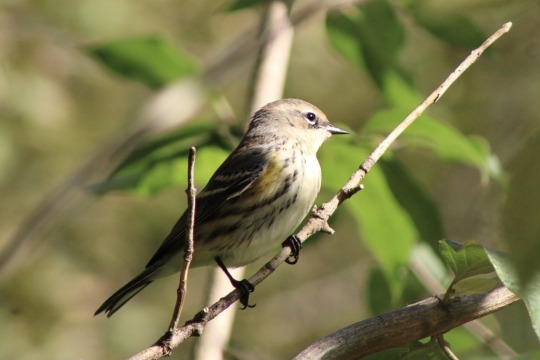

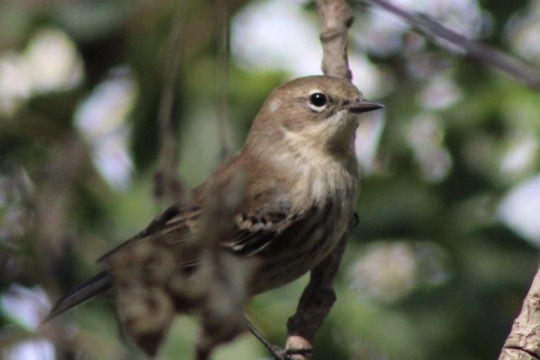



Got to see many yellow Rumped warblers today. They are migrating and won’t be here long.
5 notes
·
View notes
Text

crecent-chested warbler - chipe cejas blancas
there is something about witnessing warblers endemic to méxico that is different from experiencing any other birds. as a mexican-american, and as a mexican who lived many years over there, i enjoy of the migratory species here while they pass through in the spring and fall.
but when i visit anywhere in méxico, im greeted by not only the familiar migratory friends, but the many endemics who don’t migrate and stay right where they are.
to me, the feeling of witnessing warblers here is much like being with close family and friends here in the states, who migrated here to support themselves and their families and are working very hard to persist. witnessing mexican warblers to me is like visiting extended family in méxico who stayed right at home, sometimes longing for their kin who, at times, are in perilous journeys abroad.
perhaps not alone in this sentiment, drawing this connection gives me a very special and dire need to appreciate them, protect them, and share this view. because though these moments of interaction may be plentiful now, there exists pressures in our current world that directly or indirectly seeks to snuff out, push, or otherwise displace these loved ones. whether i’m talking about warblers or immigrants, i’ll let you choose.
#birdblr#birding#birds#birdwatchers#nature#wildlife#birbs of tumblr#birdwatching#wildlife photography#bird photography
22 notes
·
View notes
Text

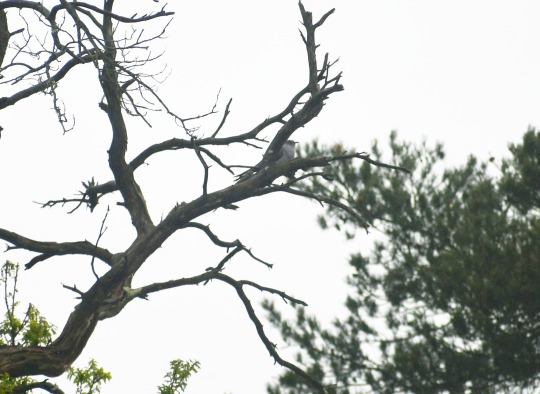

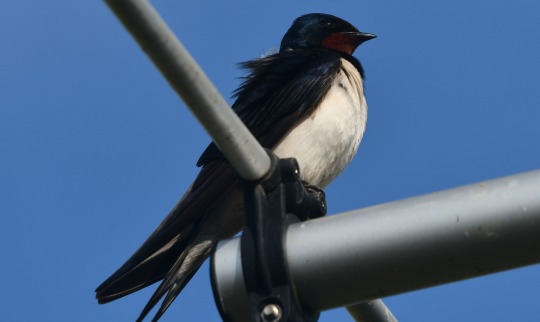
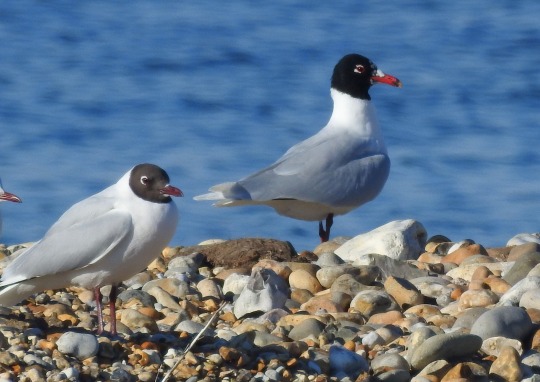





Ten of my favourite spring time sights
In the midst of the Easter weekend, a time for me so intertwined with with the feelings of hope and rebirth that this fine and favourite season of mine brings, I wanted to reflect on some of my favourite sights of this time in nature which together brings one of the greatest shows on earth. There are so many stages of spring for me from the first daffodils tentatively springing up showing the longer days are coming to glorious Marsh Fritillary butterflies stars of the late spring lepidoptera circus, so some in this list are things I've seen already this season, others what is happening right now and some things I look forward to hopefully seeing in the coming weeks. Below is the list in no particular order.
Baby birds
A quintessential sprig time sight, whether it's ducklings and goslings, Great Crested Grebe humbug chicks nestled on parents backs or voracious and noisy young Starlings adorning the garden; seeing young birds brings me immense joy.
2. Cuckoos
Not much epitomises this wonderful season more for me than the consuming echoing call of the Cuckoo and exhilarating views of these enigmatic birds. The adults are with us a short while and those weeks it really feels like the year wakes up.
3. Warblers
Moving on from Cuckoos to a family featuring species who's nests they parasitize, in a similar way to Cuckoos being surrounded by warbler song in reedbeds and other habitats and getting exiting glimpses of pretty birds is a powerful sensory experience. The onomatopoeic Chiffchaffs and the tuneful Blackcaps start the marching band early in the season with migratory Sedge and Reed Warblers with their raspy tones, Whitethroat and exquisite sounding Garden Warbler coming later and the explosive call of the Cetti's Warbler a resident bird now adding to the spring time spectacle.
4. Hirundine and Swifts
Where the warblers rule the reedbeds in spring Swallow, House Martin, Sand Martin and Swift rule the skies. "One Swallow doesn't make a summer" but it lets you know spring has come. There is something of a milestone marker in seeing these species for the first time in a year and knowing hopeful times are here mixed well with wonder when considering the long and arduous journeys these precious species have made to return.
5. Seabirds coming back to nest
A personal favourite of mine with one of the groups of birds that have inspired me most, these favourite birds of mine being here makes it one of the best times of year. Locally for me early on seeing Mediterranean Gulls return to nesting grounds with their pristine jet black heads emerging and their unique wailing call with terns exciting me too are highlights. And further afield I am captivated by the likes of Guillemot, Razorbill, Puffin, Fulmar, Kittiwake and Gannet in immense bustling cliff colonies.
6. Duke of Burgundy butterflies
Butterflies generally are one of my favourite parts of spring, I can't help but be uplifted as a variety of species of these flamboyant insects take to the wing. Duke of Burgundy is one we are lucky to be able to see further afield within our home county of Hampshire and this gem of a butterfly feels a major milestone as often one of the first we go to specifically look for so you know the peak butterfly season is starting to blossom.
7. Orange Tip butterflies
Taking it back and if the season blossoms with the dukes seeing Orange Tips is where it really starts to take root. These bright species light up the world.
8. Damselflies and demoiselles
Dragonflies start coming out in spring but are quite a fixture in the summer and into the autumn too so spring for me feels like the time to focus on the smaller damselflies and demoiselles more, these glowing insects including Common and Azure and Large Red Damselflies and Beautiful and Banded Demoiselles symbolise the wonder and colour this season brings.
9. Snake's-head fritillary flowers
Seeing soggy grassland come alive with these purple and white wonders nodding from their slender stems is a sight that feels my heart with glee in the early days.
10. Cuckooflowers
A caterpillar food plant of the Orange Tip, these pretty flowers seem to emerge with confidence and soon appear in numbers, a part of the natural furniture of those days when you know the season has turned and the bright days of spring are well and truly here.
The photos in this photoset are of; a couple taken yesterday of a Mallard duckling and record shot of a Cuckoo at Cadman's Pool in the New Forest, a Sedge Warbler at Winnall Moors on Wednesday, Swallow at RSPB Bempton Cliffs last June, Mediterranean and Black-headed Gull at Hayling Island Oysterbeds this March, Duke of Burgundy at Noar Hill last year and Orange Tip at Winnall Moors in 2023, Large Red Damselfly at Lakeside Country Park in 2020, snake's-head fritillary at Lakeside recently and cuckooflower there on Monday.
#cuckoo#mallard#sedge warbler#swallow#mediterranean gull#puffin#photography#orange tip#duke of burgundy#seabirds#large red damselfly#snake's-head fritillary#cuckooflower#2025#spring#season#hope#easter#world#england#uk#earth#nature#birdwatching#butterflies#europe#flowers#damselflies#wildlife
18 notes
·
View notes
Text
The Complicated Ecology of Cemeteries (Sierra Club)

Excerpt from this story from Sierra Club:
Cemeteries are a paradox in the modern Western world. On one hand, they are widely seen as calm and comforting spaces, places to grieve but also quietly contemplate in a world that offers few such chances. But their association with death—and decades of horror films and suspenseful TV shows using them as backdrops—can make them unnerving places. This same complicated relationship extends beyond the human experience of grave sites. For the nonhuman world of plants and animals, cemeteries can be sources of both refuge and danger.
Itescu, along with Jonathan Jeschke of the Freie Universität Berlin, published a paper earlier this year reviewing the biodiversity value of cemeteries and comparing it with other urban spaces like parks and botanical gardens. They found that cemeteries tended to host more native species than city parks, which were often landscaped with non-native or even invasive plants. Parks had their own advantages and contained slightly more species overall, but cemeteries proved to be important plant and animal havens in urban areas, including for endangered species like orchids. It’s one of the first global reviews of the biodiversity of cemeteries, with data from 50 cities in 27 countries.
A high-level study like Itescu and Jeschke’s can tell us a lot about the overall value of cemeteries to wildlife, but there is so much variety in the size, age, and management of individual sites that further inspection can provide even more insight into these unnaturally natural urban oases.
The rural cemetery as we know it, with its parklike landscaping and winding walking paths, is a relatively modern concept, only about 150 years old. Mount Auburn Cemetery in Cambridge, Massachusetts, is one of the oldest and most visited burial sites in the United States. It was among the first in the country to embrace this new type of design. For its architects, Alexander Wadsworth and Jacob Bigelow, the cemetery was not just a place for the deceased to rest. Rather, it could also be a destination for loved ones and others to visit.
Their design is rare among cemeteries not only for its age and claim to fame but also because it employs a full-time ecologist—Paul Kwiatkowski. When he first came to Mount Auburn in 1999 to work in the greenhouse, the cemetery’s president allowed him to experiment with improving the water quality in their ponds and then collect rainwater to reduce their groundwater usage. Over time, those small steps added up to a more conservation-minded way to manage the whole site, drawing the attention of other experts who wanted to help.
“We invited ecologists, biologists, hydrologists, landscape designers, and herpetologists,” Kwiatkowski said, “and we got everyone together to walk around the cemetery, to have conversations and evaluate where we stood with what we had been doing to improve habitat and create a balance between natural and manipulated areas.”
Today, the 175-acre cemetery is home to a huge variety of wildlife and hosts researchers from around the country studying its flora and fauna. Animals like bats, coyotes, foxes, and raccoons frequently roam the grounds. And it’s become one of the most diverse birding sites in the Boston area, enticing warblers, owls, flycatchers, and other resident and migratory species.
40 notes
·
View notes
Text
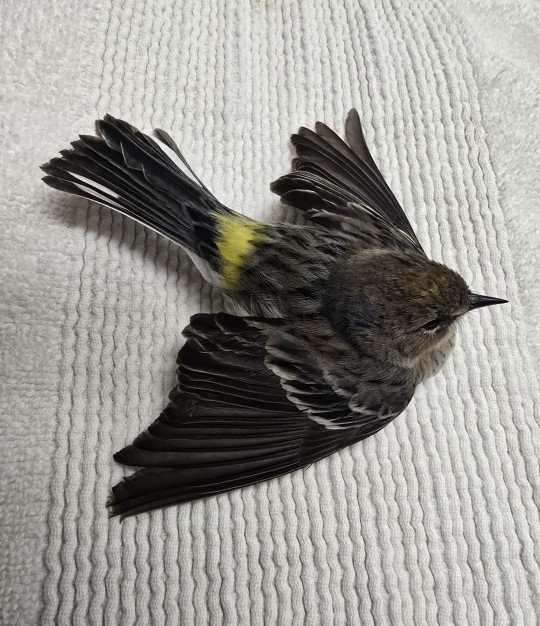
This female immature Cape May Warbler was rescued down in traffic in Key West this morning by a passerby, and we were able to pick the migratory bird up from them. The Warbler has impact related head trauma and is recovering in our clinic. www.keywestwildlifecenter.org
15 notes
·
View notes